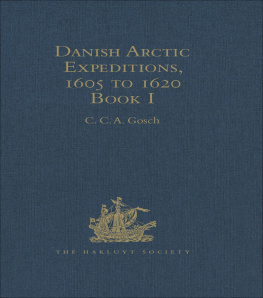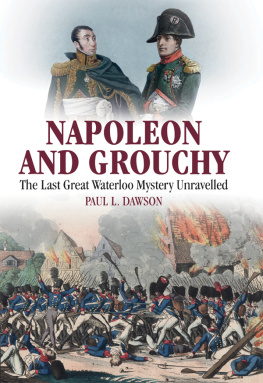INTRODUCTION.
The following little book which was first published within two years of the events which it describes, was republished in 1852, after some revision by the author, under the title of "The Days of Battle." It has now been out of print for a considerable time, but its merits as a very graphic and interesting description of those few momentous days which have left their mark on English literature no less than on the history of Europe, are sufficient, it is believed, to justify its republication in a popular series.
Though it was first published anonymously as a "Narrative of a few days' Residence in Belgium with some account of a visit to the field of Waterloo, by an Englishwoman," it has so much personal interest that the reader will, doubtless, be glad to know something of its author, more especially as she is favourably known by other works, and with other members of her family has claims upon the memory of a younger generation.
Miss Charlotte Anne Waldie, the lady in question, was born 28 September, 1788, and was the second of three daughters of George Waldie, Esq., of Hendersyde Park, near Kelso, Roxburghshire, and Forth House, Newcastle-on-Tyne. There were also two sons, one of whom is mentioned in the following pages, but they both died without issue. The eldest daughter, Maria Jane, married in 1812 Mr. Richard Griffith, the distinguished civil engineer, who was appointed by Government sole commissioner for the general valuation of Ireland, and was the author of the famous geological map of that country. After more than forty years of arduous public service, during a large part of which he was President of the Board of Works in Ireland, he was created a baronet; and his son, Sir George R. Waldie-Griffith, inherited Mr. Waldie's estates.
The youngest of the three sisters, Jane, was an accomplished painter, and her pictures are to be met with in many institutions in the north of England. She also had considerable literary talent, and wrote a work entitled "Sketches descriptive of Italy," which was published in four volumes in 1820. She married Captain, afterwards Admiral, Watts, of Langton Grange, near Staindrop, Darlington, but unfortunately died in early life.
Charlotte, the sister with whom we are chiefly concerned, accompanied her brother and younger sister, as is hereafter related, on a visit to Brussels, in June, 1815, when it had temporarily and hastily become the headquarters of the army under Wellington. The allied forces, as every one supposed, were to meet and crush Napoleon, who had just returned from Elba, before he had time to take the offensive. But his movements were more rapid than had been anticipated, and the Belgian capital, crowded with non-combatants of both sexes, instead of being merely a point of departure, suddenly found itself the central point of the seat of war. The pen of Thackeray has well adapted this dramatic situation to the purposes of fiction; but in the following pages we have the circumstances brought before us with all the vividness which actual experience only can give. A few weeks later the two sisters visited the field of Waterloo, and a short narrative of the battle written by one, and illustrated by the pencil of the other, was published anonymously by Murray, and rapidly went through ten editions.
In the course of the next year the two sisters rejoined their brother in France, and went on with him to Italy, and it was then, as explained in the author's preface, that the following account, which incorporated the previous narrative, made its appearance.
In 1817-18 Miss Charlotte Waldie was again in Italy, and in 1820 published, still anonymously, her best known work, "Rome in the Nineteenth Century."
In the same year her sister published her "Sketches in Italy," above referred to. Two years later Charlotte Waldie married Stephen Eaton, Esq., banker, of Stamford, and of Ketton Hall, Rutland. A few years afterwards she published a story in three volumes, entitled "Continental Adventures."
Mrs. Eaton's last work, "At Home and Abroad," was published in 1831. In 1851 she prepared a new edition, the fifth, of "Rome in the Nineteenth Century," in two volumes, with illustrations, for Bohn's Illustrated Library, and in 1852 she revised the present work for the same publisher. She died on 28 April, 1859, in the seventy-first year of her age.
The following reprint differs only from the author's last edition in respect to the title and the appended notes. It must be remembered that the few details of the battle of Waterloo are based upon the reports current at the time, and have since been supplemented or corrected in various ways. In all that came under the writer's own observation there is no room for doubt as to her correctness, and her picture of Brussels during the days of battle is corroborated by another account, also by a lady and an English writer, namely, the well-known Fanny Burney, who was then the wife of General D'Arblay, a French officer in the service of Louis XVIII. Madame D'Arblay, being unsuccessful in an attempt to leave the city by canal-boat, spent some weeks in Brussels, but pre-occupied as she was by the absence of her husband she exercised less observation on what was going on around her, and her account is far less graphic than that of her younger fellow-countrywoman. Nor did she visit the field of battle, and realize in an equal degree the terrible penalty which war exacts from victors as well as vanquished. Whilst military glories are held to be worthy of commemoration, it is fitting that such details should not be left untold. And in truth the campaign of Waterloo has memories which an Englishman cannot afford to lose. If a righteous and unselfish cause may hallow the horrors of those days, it is not well to ignore them altogether. If a cool and confident intrepidity on the part of a leader, if daring disregard of life in comparison with duty on the part of his officers, if resolute and patient endurance for hours, of rank and file, under repeated charge, or still more deadly storm of leadif, in short, courage and fortitude, well employed, are virtues not yet out of date, the tale of Waterloo should still be told, and this little book, genuine as it is, has still its testimony to add thereto.
E.B.





